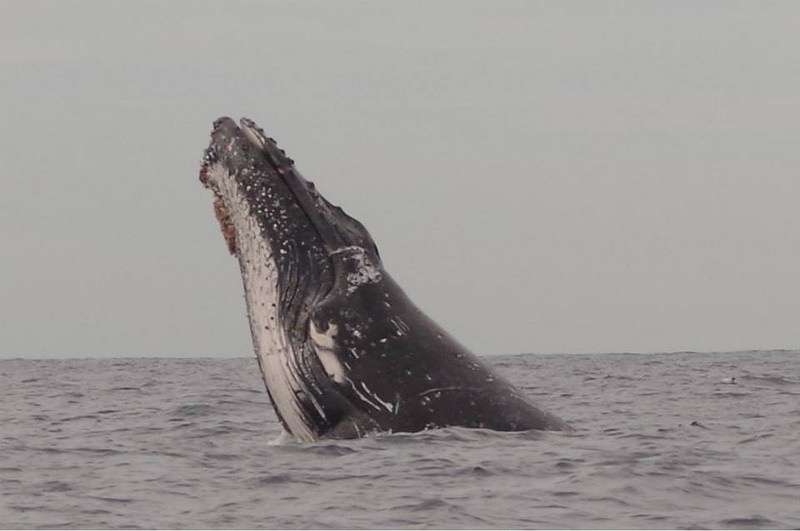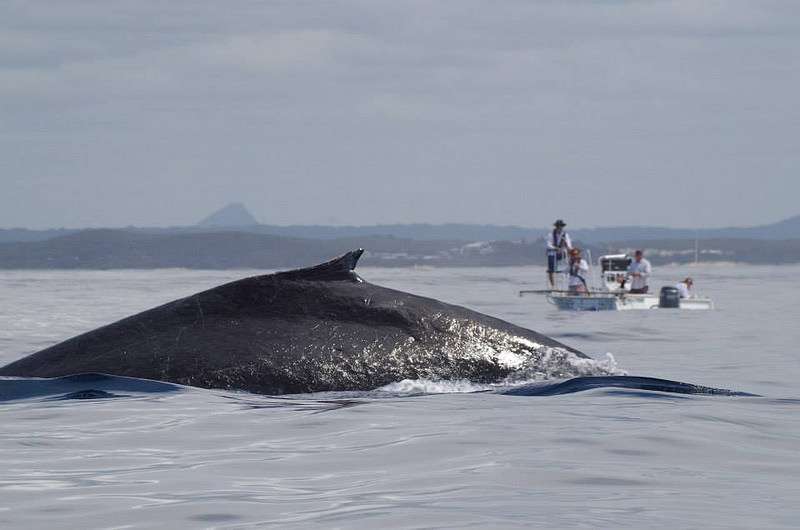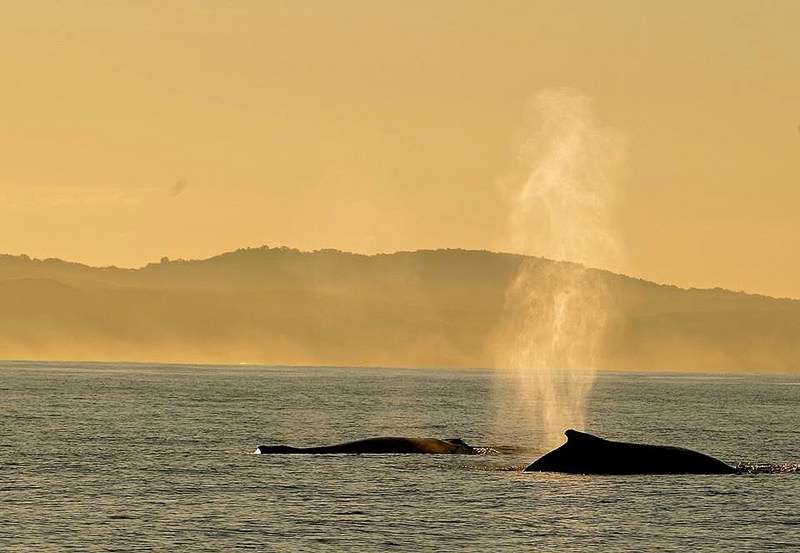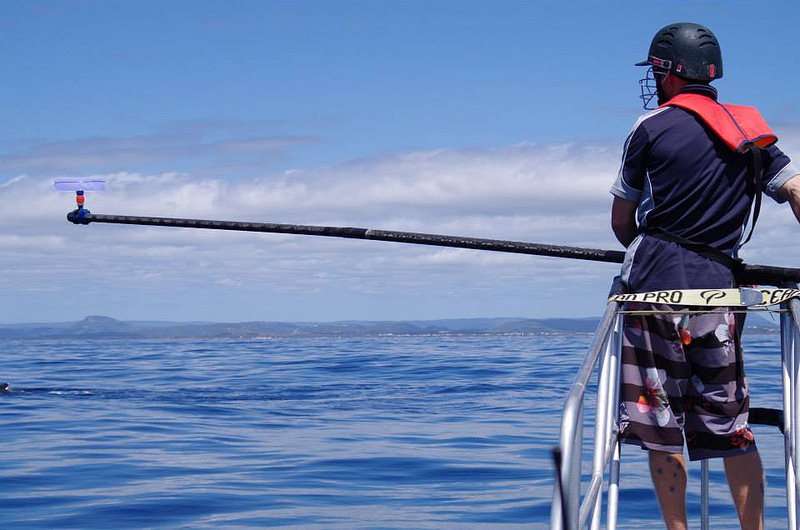Whale of a job collecting spout samples in wild

Australia's humpback whale population is increasing by more than 10 per cent a year, and University of Queensland researchers are going to extreme lengths to find out why.
UQ School of Veterinary Science PhD student Fletcher Mingramm is collecting samples in the wild, but it's no easy feat catching the whale "blow" – a mix of mucous, breath and water that a whale can spout up to six metres into the air when surfacing or diving.
Mr Mingramm, working with UQ's Cetacean Ecology and Acoustics Laboratory, is using a dish attached to a six-metre carbon fibre pole to collect samples from migrating whales while following at a safe distance in a small boat.
"We know that Australian humpback whale populations have been increasing since people stopped hunting them, but we don't know why they are increasing at such an exponential rate," Mr Mingramm said.
"Neighbouring humpback populations in the South Pacific remain low, although records show they historically had higher numbers.
"The fact they are not recovering well suggests something else is going on with regards to key processes, such as feeding or breeding, and this is something we need to better understand.
"Using this information as a point of comparison, we may then be able to look at populations not recovering as rapidly.

"We don't know for example, what percentage of the female population is pregnant, or how stressed the animals become during the annual migration up the Australian coastline from colder Antarctic waters during winter."
Mr Mingramm is collecting samples near North Stradbroke Island and Noosa in south-East Queensland, and near Geraldton in Western Australia, and storing them in preservative before they undergo hormone extraction and analysis.
He is one of only a few people in the world collecting data on humpback whales from their blows, and hopes the tools developed could one day be applied to any humpback whale population.
Whaling began in Australia in the 18th Century, with whaling stations in Australia and New Zealand killing 40,000 whales and reducing numbers to an estimated 500.

Commercial harvesting of humpback whales ceased in 1963 and they were protected worldwide in 1965 due to declining numbers.
Mr Mingramm said a population census in June and July last year estimated about 25,000 humpbacks were migrating along Australia's East coast.
He said it was likely closer to 30,000 migrated along the coast of Western Australia.
Mr Mingramm is also acquiring small skin and blubber samples from wild whales by using darts which bounce off the skin without harming the mammals.

It is a method recommended by the International Whaling Commission Scientific Committee as the most effective and least invasive way of obtaining tissue samples required for molecular genetic and pollutant studies.
"The study is about providing baseline fundamental information – currently we don't have good measures for the health or reproductive qualities of Australian humpback whales," he said.
"I'm on track to acquire 250 tissue samples and 100 to 120 blow samples by the end of next year."
Mr Mingramm is also acquiring samples from dead stranded whales and from museum archives.
UQ takes samples under Commonwealth and State permits, providing duplicate samples for the Australian Government genetic database.
This year, Mr Mingramm will also work with the UQ Vet School's Animal Genetics Lab to determine the gender of humpback whales.
Provided by University of Queensland



















